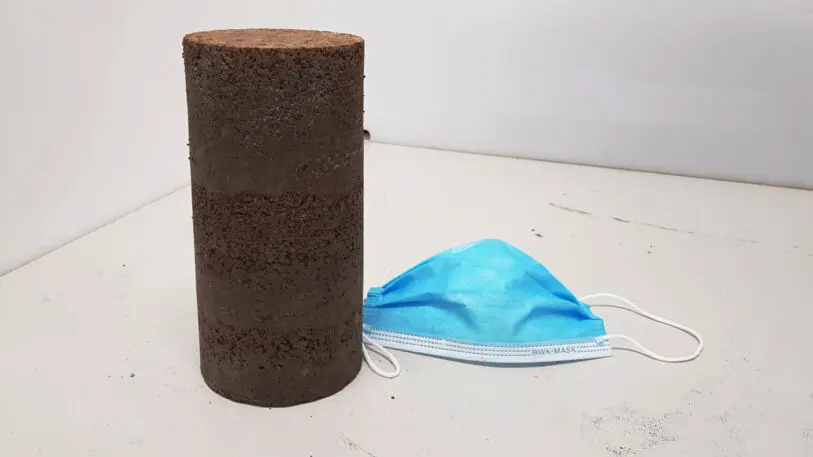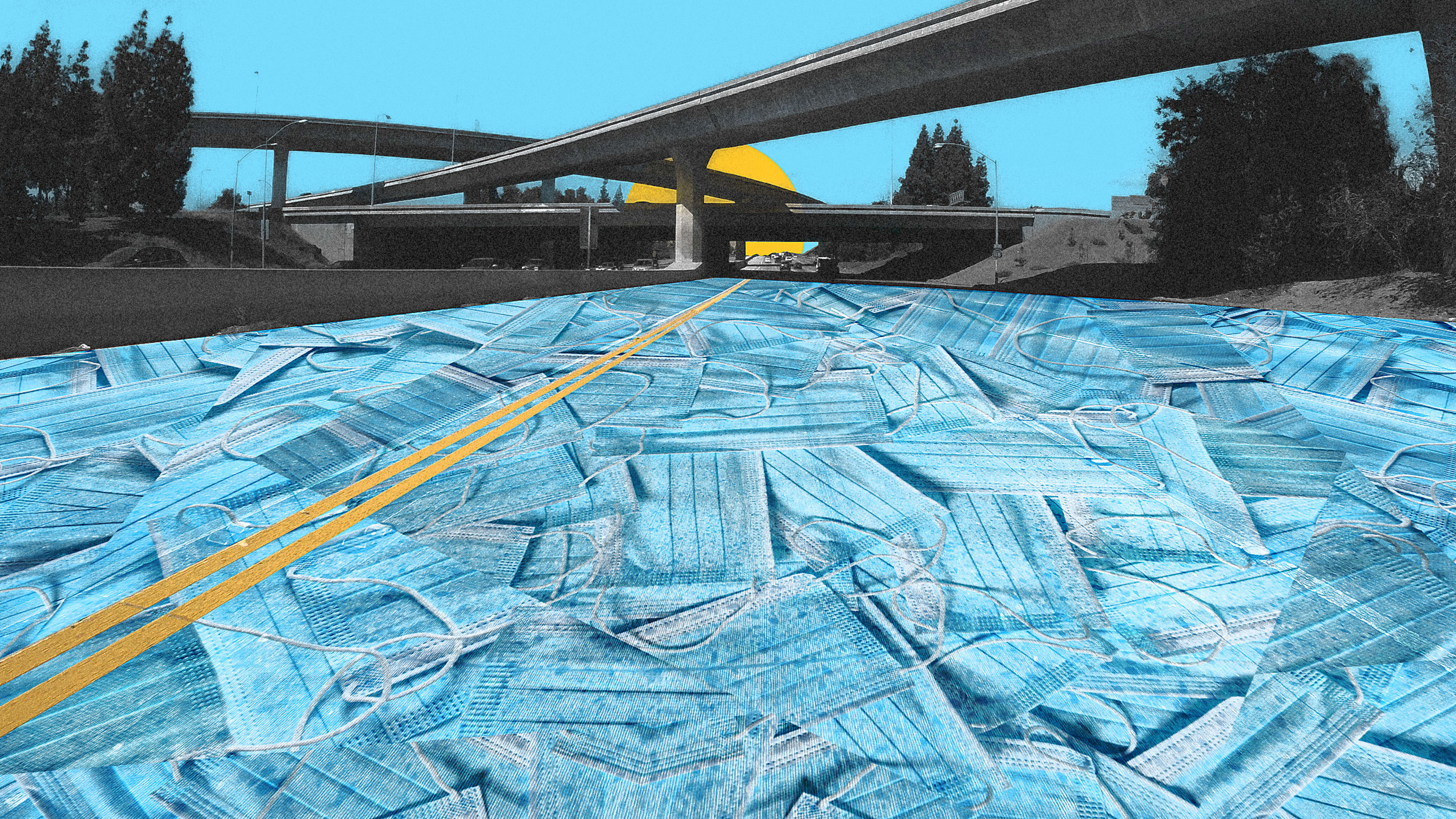The disposable masks you see every day have to go somewhere. Many, if not most, end up in a landfill. Researchers have developed a new material that turns all those masks into roads.
According to a new study in the journal Science of the Total Environment, researchers at RMIT University in Melbourne, Australia, have developed a new material that integrates shredded single-use face masks with recycled concrete aggregate (RCA), a substance made of waste materials from demolished buildings, such as concrete chunks, that are crushed up and repurposed. The new material not only gives new life to some of the 6.8 billion face masks the researchers estimate are used globally each day; it could actually make roads stronger, according to the study.
Single-use face masks generate significant waste. In a July report, the UN called the influx of single-use masks a “toxic problem” and estimated that 75% of used masks and other pandemic-related waste will end up in landfills or floating in the oceans.

Not only could the solution mitigate the environmental impacts of COVID-19, but it could also actually make the road work better. They found that the recycled concrete concoction can actually improve the road’s strength, ductility, and flexibility compared to a control sample of RCA without shredded fact masks in the mix.

To build a sample, the researchers used new face masks—not used ones—due to their laboratory’s COVID-19 restrictions. But if they were to use discarded masks, they could pull them out of the waste stream a few different ways. As Li explains it, waste materials are usually separated by size and weight. Smaller pieces like face masks are easier to handle and process, he says, and can be extracted using blasts of air from either an air classifier, which looks like a chimney and uses a blower to suck air out of the top, or air knives—basically a curtain of compressed air that can move stuff around.
Based on a cost analysis by Li and his team, the process could actually make roads cheaper to build. He notes that mining virgin material from a quarry runs about $50 per ton, whereas RCA is about $26. And though the collection, disinfection, and transportation of used masks could hike up costs, you need to compare those extra costs to the cost of disposing of them in a landfill, which Li says can range between about $32 and $78 per ton in urban areas in Australia. “Using face masks with recycled concrete aggregate as an alternative material would not only reduce pandemic-generated waste and the need for virgin materials but also reduce construction costs by about 30%,” he says.
Now, Li and his team are hoping to find a local government or industry partner to build and test a prototype at scale.
Recognize your brand’s excellence by applying to this year’s Brands That Matter Awards before the early-rate deadline, May 3.
